Fossils
Type of resources
Available actions
Topics
Keywords
Contact for the resource
Provided by
Years
Formats
Representation types
Update frequencies
Scale
-
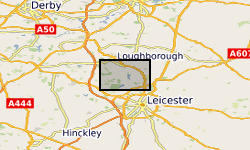
Reflectance Transformation Imaging files of specimen BGS GSM106352, a large (1.0 x 1.2m) display cast, made from Jesmonite AC-300 and coloured dark gray and showing several species typical of the fossil biota on the Bed B surface of Wilby et al. (2011) in Charnwood Forest. Wilby. P, Carney, J.N, Howe, M.P.A 2011 A rich Ediacaran assemblage from eastern Avalonia: Evidence of early widespread diversity in the deep ocean. https://doi.org/10.1130/G31890.1
-

Reflectance Transformation Imaging files for the type specimen GSM105875 [IGSN:UKBGSGSM105875] and two paratypes GSM106040 [IGSN:UKBGSGSM106040] , GSM106112 [IGSN:UKBGSGSM106112] of Hylaecullulus fordi, a new species of rangeomorph from the Bradgate Formation (Ediacaran) of Charnwood Forest, UK. Supporting information for Kenchington, Dunn and Wilby - Modularity and overcompensatory growth in rangeomorphs (late Ediacaran, approx. 580-541 Ma): adaptations for coping with environmental pressures. Current Biology.
-
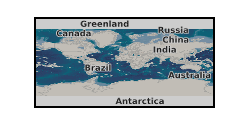
The data are from X-ray tomographic analyses of tubular fossils. All scans were carried out using Synchrotron Radiation X-ray Tomographic Microscopy (SRXTM) except for specimen SMNH X 5324 which was also analysed using Ptychographic X-ray Computed Tomography (PXCT). The methods are described in the paper. The data consist of a stacked series of .tif files that represent maps of X-ray attenuation. The individual slices can be viewed with standard graphics software. The datasets can be studied in 3D using tomographic reconstruction software such as Avizo (www.vsg3d.com/), Spiers (www.spiers-software.org/), VG Studio Max (www.volumegraphics.com) etc. The voxel size, which is needed for scale calculations, varies between datasets and is given below. Some datasets consist of two 'blocks' of data, with slices named [specimen name]_B1 and [specimen name]_B2. These are placed in the same folder and follow on directly from one another. They can be opened together as a single dataset. The files relate to the following publication: Cunningham, J. A., Vargas, K., Liu, P., Belivanova, V., Marone, F., Martinez-Perez, C., Guizar-Sicairos, M., Holler, M., Bengtson, S. & Donoghue, P. C. J. 2015. Critical appraisal of tubular putative eumetazoans from the Ediacaran Weng'an Doushantuo biota. Proceedings of the Royal Society Series B: Biological Sciences.
-
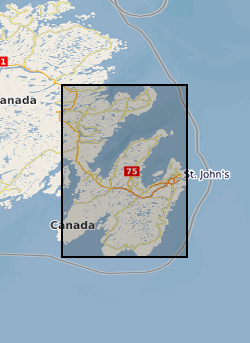
Laser scans of Ediacaran Fossil Surfaces. Data collected 2016-2018 in Newfoundland Canada using a laser-line probe. Data is in the form of .wrp files so can only be opened in Geomagic. The scan files are in files of the bedding plane. All scan numbers with the same base were scanned with the tripod in the same position, so no alignment is needed. Manuel alignment is needed between bases.
-
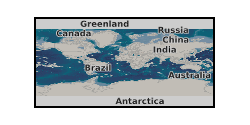
3D laser surface scan of a fossil held within the BGS Type and Stratigraphical Reference Collection. Sample number: BGS GSM 37292 Species: Metrolytoceras metretum (Ammonite) Age: Inferior Oolite Group, Jurassic Location: near Sherborne, Dorset
-
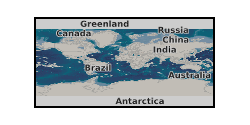
Computed tomography (CT) scans of extant and fossil chondrichthyans, of teeth organized into functional dentitions. These scans were taken on a Nikon Metrology HMX ST 225, in the Image and Analysis Centre, Natural History Museum, London.
-
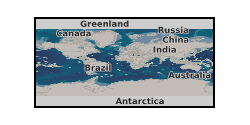
A comprehensive collection of British fossil specimens and records compiled over 150 years of palaeontological collecting and research. Also includes all associated paper data, registers, indexes of locality and storage and reports of conclusions. The specimens have variable scattered coverage mostly within the UK and Ireland but there are some overseas data. Some specimens are sited accurately to less than 1 metre, whilst some specimens have accuracies of several kilometres. Includes both locality based biostratigraphic material, plus significant type, figured and cited samples of taxonomic importance. Specimens collected by Survey geologists throughout history of Survey, with some donated specimens (e.g. the Geological Society of London Collection) predating 1835, material is still being added. The collection includes hand specimens, casts & moulds, microfossil slides & cut sections and also registers containing identifications and locality information. The specimens have various uses within biostratigraphy and taxonomy. The data have key attribute data such as locality, stratigraphic age, matrix lithology, taxonomy, etc that could be used for linking in other datasets. Access and use of the data is subject to current policies, inline with MDA's (Museum Documentation Association) Spectrum guidelines and MLA's (Museum Libraries Archives Council) Accreditation guidelines. The collection can be viewed by loan or visit, whilst copies of the associated paper data can be made available as photocopy, scan, spreadsheet, etc., subject to certain constraints and conditions.
-
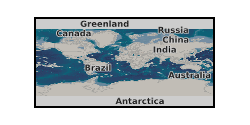
The folders GMPKU2311, GMPKU3089, ELISN108-343 and ELISN31-5 contain data from X-ray tomographic analyses of fossil embryos and post-embryonic stages as described: There is one data folder provided for each specimen, each containing the following: - Raw data: zip archive containing the raw scan data (.tif image stack). - Working files: zip archive containing the segmented slices (.tif image stack exported from Avizo labels). - Avizo project: the Avizo .hx project file. - Avizo labels: the Avizo .am labels file, containing the segmentation information. - 3D model: the 3D surface computed from the segmented labels data (.stl file). In the case of GMPKU2311 only the raw data and 3D model file are provided, as the surface was computed directly from an isosurface of the specimen in Avizo. The individual slices (.tif images) can be viewed with standard graphics software, and the datasets can be studied in 3D using tomographic reconstruction software such as Avizo (www.vsg3d.com/), Spiers (www.spiers-software.org/), VG Studio Max (www.volumegraphics.com) etc. The Avizo project and label files (.hx and .am files) require Avizo software (www.vsg3d.com/) to be opened. The 3D models (.stl files) are widely compatible with 3D freeware packages such as MeshLab (http://meshlab.sourceforge.net/) or Blender (https://www.blender.org/), or with proprietary software, e.g. Avizo (www.vsg3d.com/), Geomagic (http://www.geomagic.com/en/), Mimics (http://biomedical.materialise.com/mimics). The files relate to the following publication: Dong, X.; Vargas, K.; Cunningham, J. A.; Zhang, H.; Liu, T.; Chen, F.; Liu, J.; Bengtson, S. & Donoghue, P. C. J. 2015. Developmental biology of the early Cambrian cnidarian Olivooides. Journal of Paleontology.
-
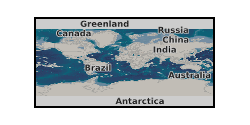
Extant euglenids from cultures LM and SEM images of living euglenids and euglenids post acetolysis Fossil material (recovered by standard palynological analysis) LM, SEM and TEM images of fossil materials from:- (i) The Torridonian of Scotland (ii) The Nonesuch Formation of Michigan, USA (iii) The 'fish beds' of the Silurian Inliers of the Midland Valley of Scotland.
-

2 volumes of macrofossil collections donated to IGS/BGS. Arranged sequentially FOR.L1-5362. Identifications, geographical information and geological information given.
 NERC Data Catalogue Service
NERC Data Catalogue Service